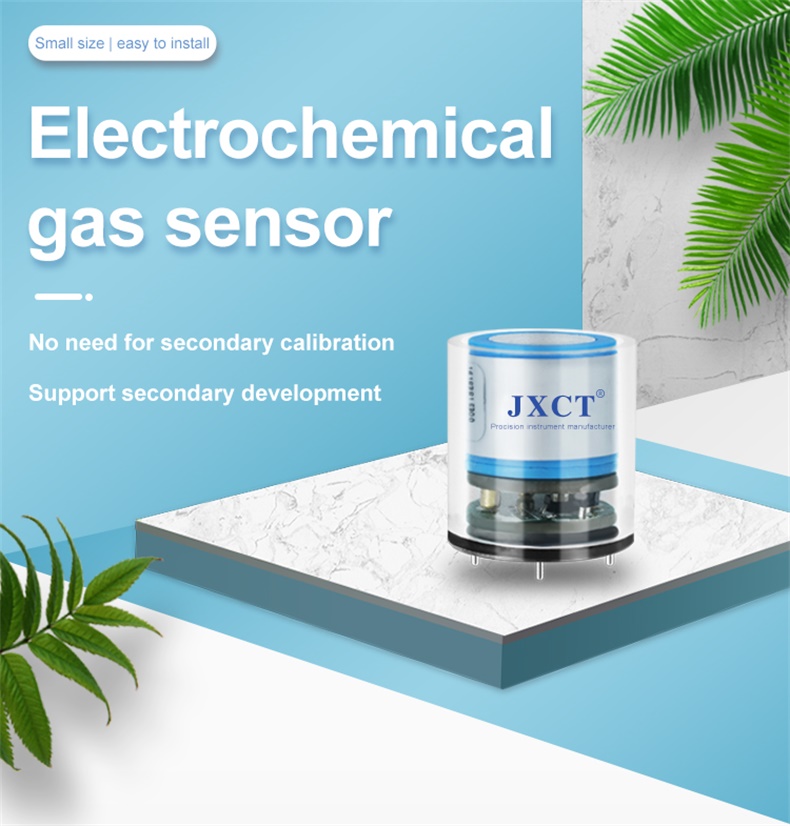Background:
Electrochemical sensors use chemical reactions to measure the concentration of specific gases in the environment. Electrochemical sensors have many different applications, and they continue to play an important role in many industries. In this blog post, we discuss how electrochemical sensors work and some of the common applications they offer.
Electrochemical sensor technology has been used in industry for many years. Current requirements for small sensors with low energy consumption and ease of use have enabled the continuous development of this technology. Electrochemical sensors can be constructed in different ways depending on the application, thus enabling tailor-made solutions for emerging applications.
Electrochemical sensors work by reacting with a gas of interest and producing an electrical signal proportional to the gas concentration. The sensor consists of two electrodes (a working electrode and a counter electrode) and works by passing charged molecules through a thin electrolyte.

An electrochemical sensor consists of the following components:
Gas permeable membrane - This material covers the sensing electrode and is used to control the amount of gas molecules reaching the electrode surface. This membrane also plays an important role of filtering unwanted particles.
Electrodes (Anodes) - In order to react efficiently with gas molecules, electrodes are usually made of metals such as platinum or gold and are used as sensors. The anode is the point where the current enters the electrode.
Electrode (Cathode) - This is where the current leaves the electrode.
Electrolyte - The electrolyte facilitates battery reactions and carries ionic charges across the electrodes.
Depending on the application requirements, electrochemical sensors detect and measure a variety of gases, including oxygen, carbon monoxide, nitrogen dioxide, nitrogen oxides, and sulfur dioxide.
In O2 measurement, oxygen enters the sensor through a capillary, contacts the cathode and is immediately reduced to hydroxide ions. The hydroxide ions then diffuse through the membrane to the anode, where they are oxidized to lead oxide. The voltage generated by this reaction is proportional to the oxygen concentration in the gas mixture. This voltage is measured by the sensor and used to calculate the percentage or trace level of oxygen in the sample.

Electrochemical sensors are very accurate
Electrochemical sensors are very accurate and can measure oxygen levels down to parts per million (ppm) levels. This makes them an important sensing technology in many different industries, including hospitals, factories and environmental monitoring. Different applications have different requirements, but typically the sensor will only operate in applications with pressures from 0-100mbar.
As the lead anode oxidizes due to electrochemical reactions, the electrical/chemical characteristics of the battery change and require periodic calibration.
Once all available lead is oxidized, the battery will no longer produce output and must be replaced. Therefore, the lower the oxygen level the sensor is exposed to, the longer it will run. Oxidation of the lead anode also means that the oxygen analyzer sensor has a limited lifetime. If the sensor is not replaced or recalibrated, the accuracy of the output will be greatly reduced.
Electrochemical Sensor Applications
Electrochemical sensors are used in a variety of applications and continue to play an important role in many industries. Some of the most common applications include:
1. Air quality environment monitoring
Due to the expanding industrial world, many countries are affected by poor air quality, especially in urban areas. This poses a threat to the quality of life, and the main sources of air pollution are nitrogen oxides, sulfur oxides, hydrogen sulfide, and some volatile organic compounds. Electrochemical gas sensors are now becoming important tools for monitoring and controlling pollutants that affect air quality. They provide a cheaper alternative to widespread air monitoring and can replace traditional and more expensive air quality monitors based on infrared spectroscopy and gas chromatography.
2. Detection of explosive gas and toxic vapor
In hazardous locations in the manufacturing and chemical industries, there is an increasing focus on explosion protection. This is due to the presence of toxic and flammable gases. Monitoring of these hazardous areas contributes to a safer work environment. Government and industry regulations such as COSHH and OSHA require workers to only be exposed to toxic gases and fumes. This suggests an increase in the use of electrochemical gas sensors, which can improve sensitivity and selectivity for a wide range of toxic gases.
3. Oxygen monitoring in the medical field
Electrochemical oxygen sensors are used in many makes and models of medical respirators and ventilators used in respiratory therapy, life support systems, and emergency medicine. When critically ill patients are at risk of not getting enough oxygen from ambient air due to respiratory problems, a ventilator is used to deliver an oxygen-enriched mixture of medical-grade O2 and ambient air through a pressurized tank. The percentage of oxygen required depends on the severity of the patient's illness, so measuring the concentration and flow of oxygen is critical to the patient's health. Their small size, ease of implementation, and simple operation make electrochemical sensors ideal detection and monitoring devices in healthcare.
4. Food quality control
As the world's population grows, so does the need for improved food supply, transportation and storage. Controlling food quality is important to both suppliers and consumers. However, electrochemical sensors are commonly used to monitor industrial oxygen. Their use in food industry applications is increasing due to reliable measurement and fast response time, and they are widely used due to compact size and low cost. Carbon dioxide and ethanol are used in the food and beverage industry, so continuous monitoring of the gas is required to prevent people from ingesting toxic or harmful gases. Other applications requiring gas detection include steam processes, inert gases for packaging, CO2 for carbonation, toxic gases for sterilization, and ammonia for refrigeration.
 : +86 155 8830 2704
: +86 155 8830 2704 : jxdziot@gmail.com
: jxdziot@gmail.com
